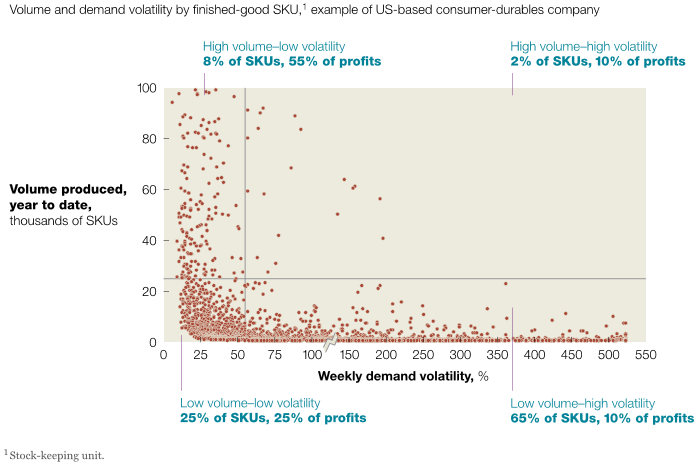Slow Demand Inventory Mistakes Even Smart People Make
Is Managing Slow Demand this Painful for You?
Slow and Intermittent traffic is bad, worse is a snowstorm shutting down the highway leaving you stranded in your car for 10 hours. There is nothing worse than slow or dead stopped traffic in a snowstorm right? Maybe, while we sit in traffic, we should consider the slow demand products in your assortment. Do your slow demand products need to be in your assortment? In reality, that’s the wrong question to ask, over 35% of your assortment has slow demand patterns. If you factor in the intermittent demand products, you are now reviewing over 60% of your products, a significant part of your inventory assortment and image to the customer.
Are You Asking the Wrong Questions about Slow Demand Products
There is no question that you need slow and intermittent demand products in an assortment to allow shoppers a choice of goods and the feeling your company can provide all the shopper will need. Customer POS basket analysis has repeatedly highlighted how slow demand products are bought with mainstay products increasing the sales gross margin. The real issue is how are you managing your slow demand product assortments? Do you even have a strategy for buying and replenishing your slow demand products or worse maybe your strategy is to manage empty shelf space by moving product around? The truth is when managed with a good strategy, slow demand products will make a significant contribution to your GMROI, providing a huge lift to company sales and image.
A Fix for Slow Demand Movers
Slow-moving inventory can be a boon if you have a smart stocking strategy. There are two key pieces that must work together for a retailer to win with slow movers: a replenishment system that provides strong forecasting and planning and an inventory policy that looks at inventory costs in conjunction with the GMROI profit contributions of each item. The results of your smart buying are higher sales, lower inventory and happy customers.
Learn 3 things to do and 3 things to stop doing when working with slow demand products. Read: Do You Make These Mistakes with Slow Demand Products?
Slow Demand Product Inventory Strategy
A key action for you is to develop a strategy to improving the performance of your slow moving inventory. To become a master inventory strategist, you first need to define what is considered slow moving in your particular business, then you’ll need to understand the impact that segment of your inventory has on your business’s results.
Let’s start by turning your attention to an article published in SCDigest which illustrates the importance of managing your slow moving SKUs. They used data from McKinsey Quarterly for segmenting the inventory by demand and volume. From there they could determine each segment’s profit contribution.
Grouping products by demand volatility and overall volume can shed light on how to optimize the supply chain.

Supply Chain Graphic of the Week: Segmenting the Supply Chain
The graph confirms what you know from experience: a significant portion of the inventory represented low-volume. However, those items were found to contribute 35% of the total profit – not an insignificant amount!
With this sort of insight at your fingertips, you can construct a segmented supply chain strategy that fits your particular business needs to maximize your profitability. Think about all the insight you can gain into your inventory’s performance!
Manage Slow Demand to Suit Your Customers
To tailor your inventory on slow and intermittent items to suit your customer’s needs, you should:
- Review forecast accuracy over a window of time that includes multiple periods.
- Measure service attained – NOT in-stock. The focus needs to be on the inventory stocking requirements necessary to meet service level.
- Utilize demand forecasting that correctly identifies slow and intermittent demand. Demand should not smoothed or Zero Sales ignored when calculating a demand forecast.
- Your inventory plan should be integrated into your replenishment solution, consistently weighing your service level and inventory goals for each item, every day, to get the best results.
Start on Your New Strategy Today
Ready to become a master strategist of your inventory? Matching inventory to meet customer demand and sales results is what’s important. Do you have more questions that need to be answered? We can help you to ‘Tighten the Links in Your Chain™.’ We’re standing by ready to help when you’re ready.
Just contact us., for solutions when you’re ready to take command of your slow demand.
- How to Avoid Carrying Cost Mistakes in Inventory Optimization - June 10, 2024
- 3 Common Forecasting Software Issues and How to Fix - May 20, 2024
- The Hidden Connection: Lead Time And Inventory Optimization Explained - May 13, 2024








